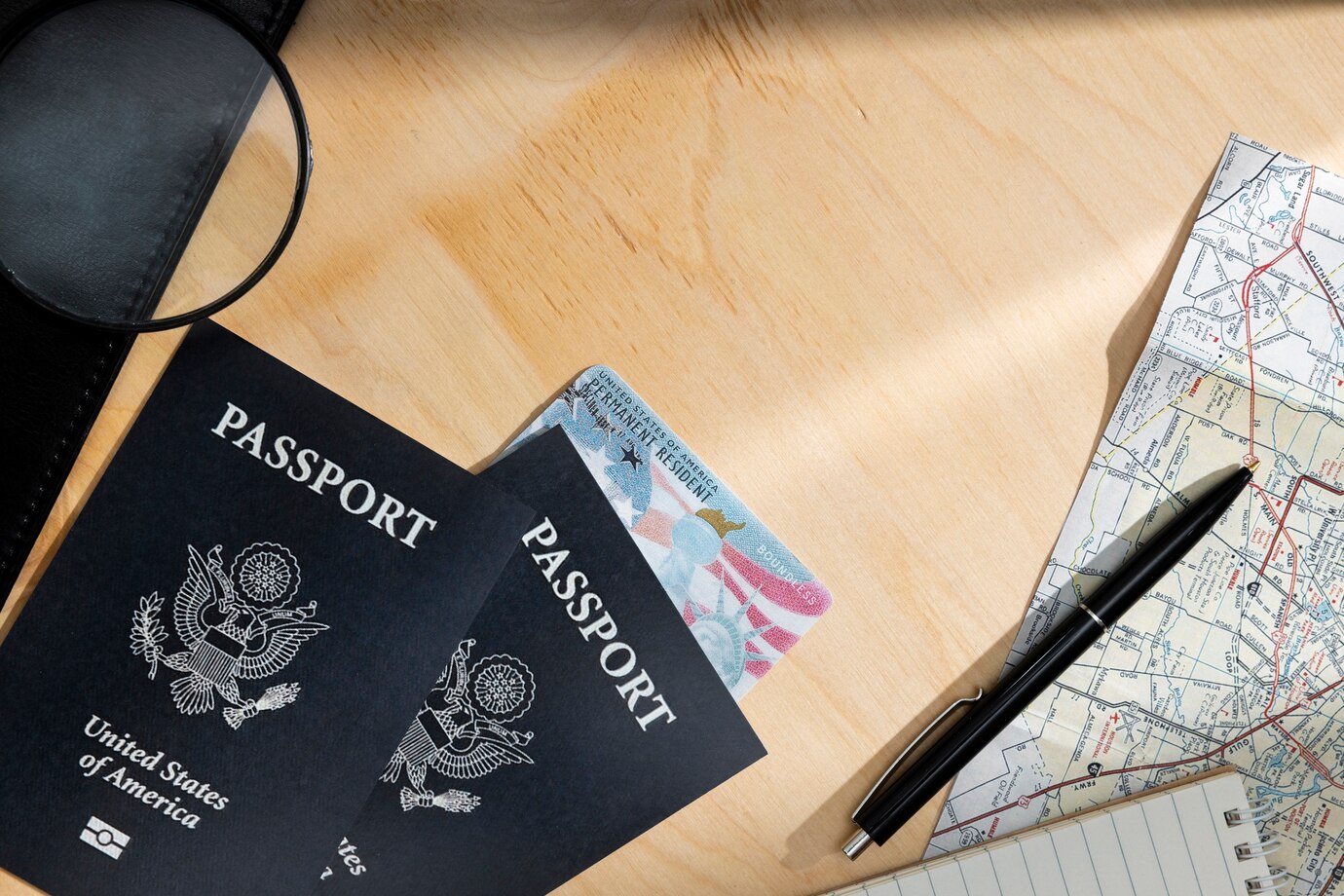Traveling to new horizons often begins with a small but crucial step: capturing the perfect photo for your visa or passport. It’s a task seemingly simple, yet fraught with hidden rules and unexpected details. Fear not, intrepid explorer! This guide is your compass, meticulously traversing the labyrinth of lens laws and regulations that stand between you and your adventure. Forget blurry faces and cryptic rejections; within these pages you’ll find a comprehensive roadmap to snapping photos that meet international standards and unlock the passport to your dreams. From head sizes to background hues, camera angles to acceptable attire, we dive deep into the dos and don’ts, armed with clear explanations and helpful tips. Prepare to shed the cloak of photo-fueled anxieties and confidently face the camera, knowing your face will be your passport to the world.
Types of Documents that Require Photos
The necessity for passport and visa photos arises primarily in the context of international travel documentation. The two primary documents that mandate the inclusion of photographs are passports and visas, each serving distinct yet interconnected purposes.
- Passports: A passport, often considered a traveler’s most essential document, requires a dedicated section for a personalized photograph. This photo serves as a visual identifier, ensuring a direct association between the individual and the document. Whether applying for a new passport or renewing an existing one, submitting an appropriate photograph is a fundamental requirement.
- Visas: While passports encapsulate a traveler’s identity, visas grant permission for entry into specific countries. Visa applications, depending on the destination, often necessitate a set of photographs distinct from those used for passports. These photos play a crucial role in the visa approval process, enabling immigration officials to associate a face with the visa documentation.
In certain instances, other identification cards or travel documents might also require photographs. These can include identity cards issued by government authorities or specific travel permits required for certain regions. It is imperative for travelers to familiarize themselves with the specific photo requirements for each document, ensuring compliance with the regulations set forth by the relevant issuing authorities. The types of documents requiring photographs may vary from country to country, making it essential to research and understand the specific requirements applicable to your travel plans.
General Rules for Submitting Photos
Once the understanding of which documents require photos is established, attention must turn to the specific guidelines governing the preparation and submission of these visual representations. While these regulations can vary from country to country, certain general rules remain consistent across borders.
- Size: The dimensions of the photograph play a pivotal role in adhering to international standards. Most countries specify a particular size requirement, commonly 2 x 2 inches or 35 x 45 millimeters. This uniformity facilitates the ease of processing and handling of documents on a global scale, emphasizing the importance of precision in the sizing of passport and visa photos.
- Background: The background against which the subject is photographed is another critical factor. Generally, a plain, light-colored background is preferred, often in shades of white or off-white. The intention is to eliminate distractions and ensure the subject’s face is clearly visible. Patterns, shadows, or vibrant colors in the background can impede facial recognition software and may result in the rejection of the submitted photos.
- Expression: Maintaining a neutral facial expression is a fundamental requirement for passport and visa photos. Authorities insist on a straightforward, non-smiling pose with both eyes open and a closed mouth. The objective is to capture a clear and unaltered image of the individual’s facial features, aiding in accurate identification and authentication.
- Headgear and Accessories: While certain exceptions exist for religious or cultural headgear, the general preference is for passport and visa photos to depict individuals without accessories that obscure the face. Glasses, hats, and other items that cast shadows or cover significant portions of the face may lead to rejection. It is advisable to check the specific guidelines for each country regarding permissible headgear.
- Clothing: The choice of clothing should align with the general rule of maintaining a natural and unaltered appearance. Uniforms are typically discouraged unless explicitly required by the issuing authority. The emphasis is on capturing the individual’s regular appearance without any attire that might raise concerns or complicate the identification process.
| Aspect | Requirement | Additional Notes |
| Size | 2 x 2 inches or 35 x 45 millimeters | |
| Background | Plain, light-colored (white or off-white) | Avoid patterns, shadows, or vibrant colors |
| Facial Expression | Neutral, with both eyes open and a closed mouth | |
| Headgear | Permissible for religious or cultural reasons | Check specific guidelines for each country |
| Clothing | No uniforms unless explicitly required |
Understanding and adhering to these general rules is crucial for a seamless passport and visa application process. As these guidelines form the foundation for photo acceptance, meticulous attention to detail ensures that the submitted photographs meet the stringent criteria set forth by immigration and consular authorities.
Composition and Quality of Photos
The composition and quality of passport and visa photos significantly impact their acceptance during the application process. Meeting specific criteria ensures that these visual representations serve their purpose effectively, facilitating seamless identification and verification.
- Lighting: Proper lighting is paramount when capturing passport and visa photos. Even and natural lighting helps eliminate shadows on the face, ensuring clarity and accuracy. Harsh lighting or flash glare should be avoided, as they can distort facial features and compromise the overall quality of the photograph.
- Resolution: High resolution is essential to capture clear and detailed images. Photos with low resolution, pixelation, or blurriness may not meet the standards required for facial recognition technology, potentially leading to delays or rejections in the application process.
- Pose: The pose of the individual in the photograph holds significance. A straightforward, forward-facing pose with the face centered ensures consistency in identification. The camera should be at eye level, capturing the subject in a natural stance without any exaggerated angles or tilts.
- Red-eye: Eliminating red-eye is a simple yet crucial consideration. Red-eye can be caused by the reflection of light from the retina and can negatively impact the overall quality of the photo. Ensuring that the eyes are clear and free from red-eye enhances the professionalism and acceptability of the photograph.
Passport and Visa Photography at Home
In recent times, with the proliferation of digital photography, many individuals opt to take their passport and visa photos at home. This approach provides convenience and cost savings, but it requires meticulous attention to detail to ensure compliance with the specified guidelines.
Capturing an appropriate photograph at home begins with the setup of a suitable environment. A plain, light-colored background is essential to meet the standard requirements. This could be achieved against a wall or by using a backdrop that satisfies the stipulated criteria, typically white or off-white.
Utilizing a high-resolution camera or a modern smartphone is crucial to ensure the resulting images meet the necessary clarity and detail standards. Proper lighting is equally vital. Natural light, diffused evenly, or soft artificial lighting can help avoid harsh shadows on the face, contributing to a well-lit and clear photograph.
Maintaining the correct pose is an often-overlooked aspect of DIY passport and visa photography. A straightforward, forward-facing stance with the subject’s face centered and at eye level is recommended. Avoiding unnatural angles or tilts contributes to a professional-looking photo.

